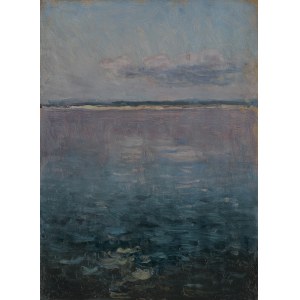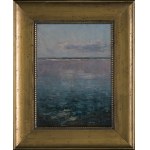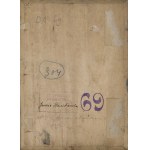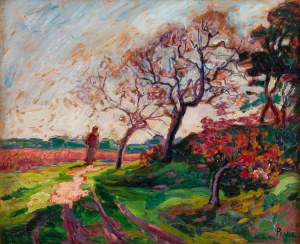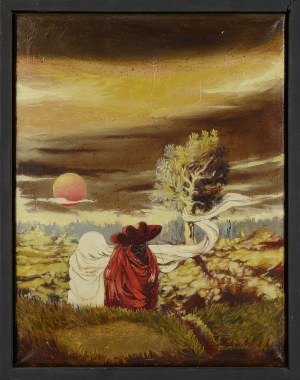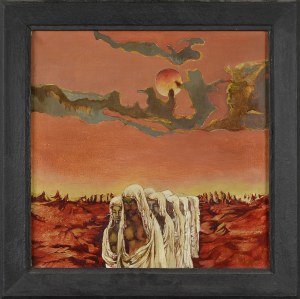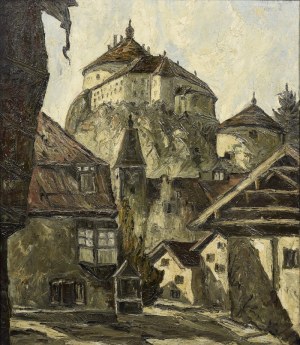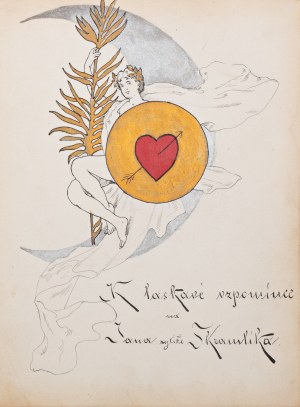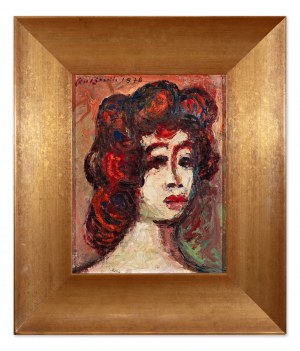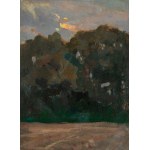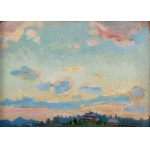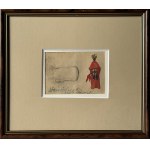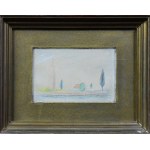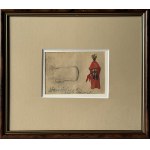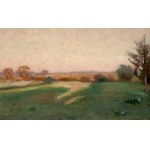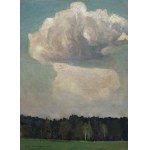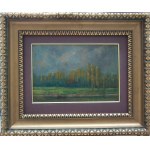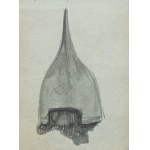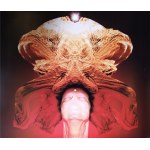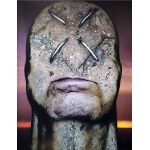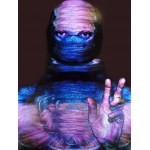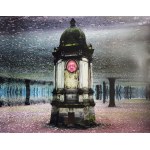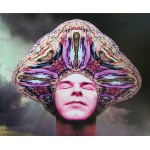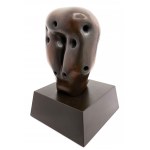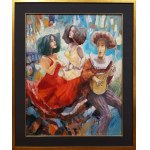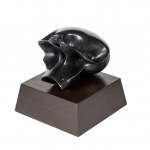22,5 x 16,3cm - oil, board signed l.d.: JAN STANISŁAWSKI
On the reverse of the stamp, inscriptions:
- stamp: JAN STANISŁAWSKI | ZE SPUŚCIZNY | POŚMIERTNEJ | [signed] Janina Stanisławska;
- next to stamp: 69; above - inscription in circle: 304;
- at top left in pencil: 400 | DA 69 | 1902;
- left at bottom: Between Kiev and Kamieniec | 1902;
- on the upper slat of the frame (ink): property of Zofia Zoltowska [...], on the lower slat - Stanislavski.
Provenance: Zofia Zoltowska (Niechanow near Gniezno 1887 - Puszczykowo near Poznan 1975), whose name as the owner of the painting appears on the frame, was a representative of one of the most prominent families of Greater Poland. She was the daughter of Stanislaw Zoltowski and Maria née Sapieha. She had lived in Poznan since the late 1920s, where she and her mother ran a social salon. In 1930 she married a professor at the University of Poznan, biochemist Stefan Dabrowski, who was elected rector of UP in 1939.
The Dnieper River fascinated Stanislavsky. He returned here many times to observe its banks, meanders and limes at different times of the day and year, in cloudy and sunny weather; almost impressionistically registering in successive compositions the changes occurring in the river's colors or in the play of light on the water surface.
Urszula Kozakowska-Zaucha, Jan Stanislawski, published by Bosz, Olszanica 2006, p. 65.
The mature period of Stanislawski's work begins after 1897. As Urszula Kozakowska-Zaucha states, then true chefs d'oeuvre were created, exquisite "pure landscapes", which are descriptions of nature itself, full of air, space, devoid of any anecdote, any arranged genre scenes, staffage (dz. cit., p. 17).
Around 1900, Stanislavsky's tendency to synthesize landscapes intensified in his paintings, while at the same time views of the Dnieper River became an important subject. At the time, the artist traveled repeatedly to Kiev, where he visited his mother, who lived there, and went on plein air trips on occasion. The Dnieper between Kiev and Kamenets, created around 1902, shows the fullness of the painter's style and his supreme mastery. The sparkling sapphire and violet blue water is harmonized by the blue-gray sky with a cloud hanging over the river's depths. In the distance, a patch of sand cuts off in sharp white. To the left on the horizon, rendered with just three virtuoso points, the domes of the Orthodox Church gleam. In addition to its superior painterly qualities, the work contains a significant layer of meaning, which Urszula Kozakowska-Zaucha introduces: Stanislavsky was also intrigued by the subject of another element: it was water - materia prima - from which the world and life emerged; the soothing water of life, a symbol of eternity, chaos, inconstancy, transformation, and the eternal problem of transience. The sheet of water, in accordance with Young Poland symbolism, also became in his compositions the image of the human soul and the knowledge latent in the subconscious, and the depth of water - the equivalent of the depth of human nature (dz. cit., p. 17).
Jan Stanislawski (Olshana in Ukraine 1860 - Krakow 1907) - an outstanding landscape painter, printmaker, educator - was one of the most colorful figures of the Krakow artistic milieu of the Young Poland era.
Initially in Warsaw and St. Petersburg, he studied mathematics, then painting under Wojciech Gerson in Warsaw, Władysław Łuszczkiewicz at the Cracow School of Fine Arts, and in 1885-1888 under Carolus Duran in Paris. He traveled extensively in Europe - he went to France, Italy, Spain, Switzerland, Germany, Austria, the Czech Republic, and traveled to Ukraine many times. In 1895 he was in Berlin, where he collaborated with W. Kossak and J. Fałat in painting the Berezina panorama. In 1897 he became a professor of landscape painting at the Cracow School of Fine Arts, the creator of the so-called Cracow School of Landscape. He educated nearly 60 students, including S. Kamocki, H. Szczygliński, S. Filipkiewicz, I. Trusz and S. Galek. He was one of the founders of the Society of Polish Artists Art (1897), a member of the Society of Polish Applied Art (1901). He participated in many exhibitions.
Initially, he painted realistic landscapes based on preparatory studies from nature (numerous surviving sketchbooks). His later fascination with Impressionism led to experiments with light in landscapes and an increasing desire to synthesize color forms. During his travels, he created hundreds, mostly miniature landscapes painted directly in the open air. He worked in printmaking, illustration, and designed posters and theater decorations.
Recently viewed
Please log in to see lots list
Favourites
Please log in to see lots list



